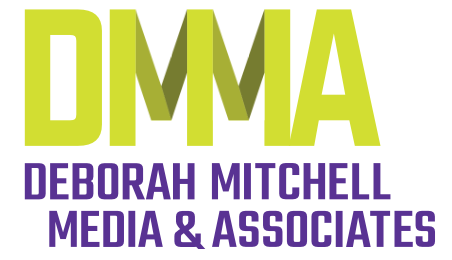If TikTok or Social Media Disappeared Tomorrow: Securing Your Digital Marketing Future
Imagine waking up tomorrow to find that your favorite social media platforms have disappeared. No Facebook, Instagram, LinkedIn, or TikTok to share updates, connect with your audience, or promote your business. This scenario might seem far-fetched, but recent events, such as the potential bans on TikTok in various regions due to data privacy concerns and geopolitical tensions, remind us how fragile reliance on social media can be. Add to that platform outages and ever-changing algorithms, and it’s clear: depending solely on social media for your digital marketing strategy is a risky bet.
The question arises: how can businesses ensure they continue to reach their audience and disseminate their content in a social media-free world?
The answer lies in adopting a resilient, multi-channel digital marketing strategy that prioritizes ownership and control of your digital assets. Here are actionable insights to future-proof your business.
The Omnichannel Approach: Building a Diverse Content Ecosystem
As detailed in Debbie’s December blog, Navigating the New Era of Video Marketing: Mastering the Omnichannel Blueprint in 2025, relying on a single platform to engage your audience is no longer sufficient. Consumer behavior today is inherently multi-channel; the average person navigates multiple platforms, each with its unique language and expectations. Businesses need to meet their audience where they are—but also ensure they have fallback options.
Adopting an omnichannel strategy involves creating content that can be repurposed across various touchpoints. For example, a single video can:
- Become a blog post highlighting its key takeaways.
- Be transformed into snippets for email newsletters.
- Provide soundbites or short clips for YouTube or podcast episodes.
This approach amplifies your reach and ensures your content remains accessible and effective regardless of platform availability or restrictions, such as the TikTok bans being debated globally.
Owning Your Audience: Email Marketing as a Pillar of Resilience
One of the most reliable and underutilized tools in digital marketing is email. Unlike social media, where you are at the mercy of platform algorithms and policies, email marketing offers complete ownership of your contact list. A robust email strategy allows you to nurture relationships, share updates, and promote products directly to your audience.
Steps to Build a Strong Email Strategy:
- Grow Your Subscriber List: Use lead magnets such as free resources, discounts, or exclusive content to encourage sign-ups.
- Segment Your Audience: Tailor content to specific subscriber groups based on their preferences, behaviors, or demographics.
- Automate with Care: Set up automated email sequences to maintain consistent engagement without overwhelming your audience.
- Focus on Quality Content: Ensure every email provides value—whether it’s educational, entertaining, or actionable.
The Role of a Content Hub: Your Website as a Central Asset
Your website should be the cornerstone of your digital presence. In a world without social media, a well-optimized and user-friendly website becomes the primary destination for your audience.
Key Elements of a Content-Driven Website:
- Blog: Regularly publish articles that address your audience’s needs, showcase your expertise, and improve SEO.
- Resource Library: Offer downloadable guides, eBooks, and case studies to establish authority and capture leads.
- Contact Options: Make it easy for visitors to get in touch through forms, chatbots, or direct email links.
- Search Engine Optimization (SEO): Optimize your site for keywords relevant to your business to ensure visibility in search engine results.
Repurposing Content: Maximizing the Value of Your Efforts
The ability to repurpose content across multiple platforms and formats is a hallmark of an effective omnichannel strategy. Repurposing saves time and ensures your content is accessible to different segments of your audience in their preferred format. For instance:
- A live webinar can be turned into an on-demand video hosted on your site.
- Key points from a podcast episode can be summarized in a blog post.
- Social media graphics can be adapted into infographics for newsletters.
Quality Over Quantity: Cultivating Meaningful Connections
As highlighted in the response document, building a quality audience is more valuable than amassing a large but disengaged following. An engaged audience finds genuine value in your content and is more likely to remain loyal and support your business.
Strategies for Building an Engaged Audience:
- Valuable Content: Prioritize content that addresses your audience’s pain points, aspirations, or interests.
- Authentic Engagement: Respond to comments, questions, and feedback to foster a sense of community.
- Collaborations: Partner with like-minded businesses or influencers to expand your reach and credibility.
- Data-Driven Adjustments: Use analytics to understand what resonates with your audience and refine your approach accordingly.
Monitoring and Adapting: Staying Ahead of Change
In the ever-evolving digital landscape, agility is crucial. Regularly monitor your digital strategy’s performance and remain open to adapting based on data and industry trends.
- Analytics Tools: Track engagement, conversion rates, and ROI across all channels.
- Feedback Mechanisms: Use surveys or feedback forms to understand your audience’s needs and preferences.
- Continuous Learning: Stay informed about emerging platforms, tools, and best practices.
Taking Action Now: The Roadmap to Digital Resilience
- Am I leveraging multiple platforms and formats to reach my audience?
- Have I built a community that values my brand beyond social media?
By addressing these questions and implementing the strategies outlined here, you can safeguard your business against the unpredictable nature of digital platforms. The disappearance of social media—or the loss of a key player like TikTok—doesn’t have to spell disaster; instead, it can be an opportunity to strengthen your digital presence and deepen your connection with your audience.
As digital marketers and business leaders, we must plan for a future where control and ownership of our digital content are paramount. By embracing an omnichannel approach, investing in email marketing, optimizing your website, and focusing on meaningful connections, you can ensure your brand thrives regardless of the digital landscape. Start today by taking steps to diversify, repurpose, and own your content—because the only constant in marketing is change.














